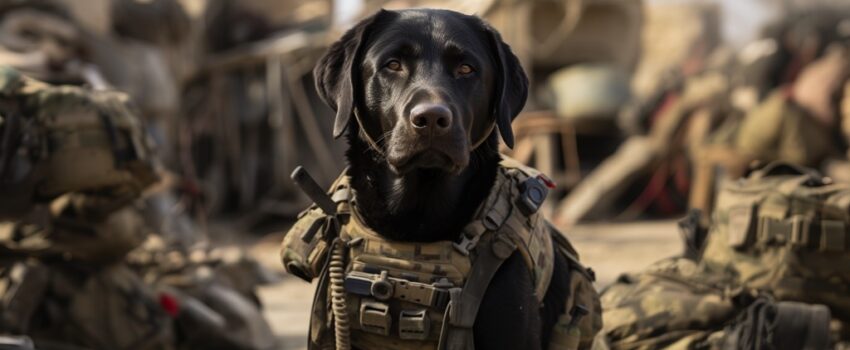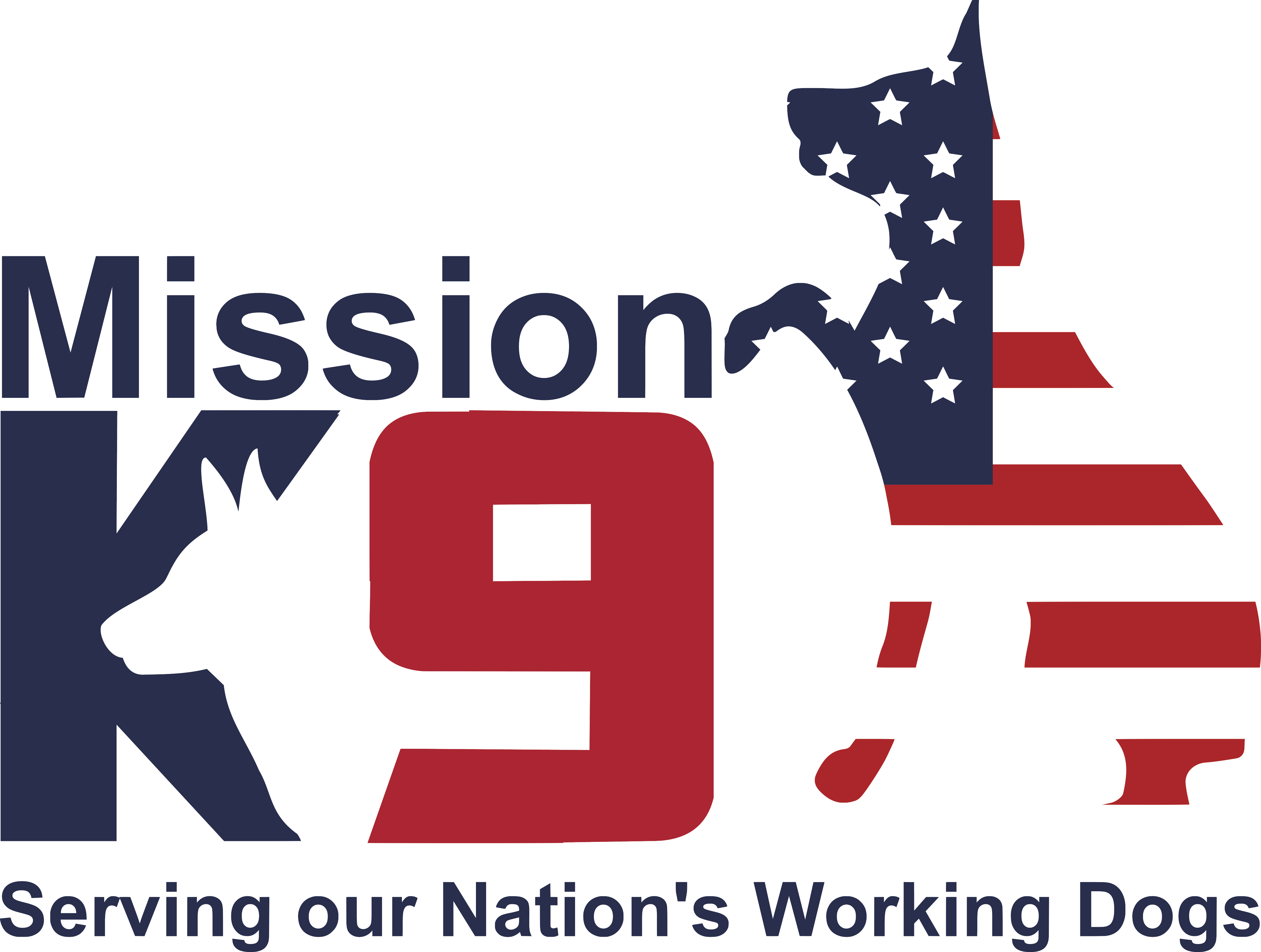What You Need To Know About Giving A Retired Military Hero A Home
Military working dogs (MWD) are a special breed of heroes, having served alongside U.S. soldiers since World War II. These four-legged soldiers are trained to sniff out explosives and drugs, conduct search and rescue missions, and provide security for military bases.
But what happens when these brave dogs retire? Many of them face the possibility of being euthanized due to a lack of resources or suitable adopters. This is where you come in – by giving a retired MWD a loving home.
Find out everything you need to know about giving a retired military working dog a home in this guide.

Life After Service
K9 dogs usually retire at 8 to 10, depending on their physical health. Some dogs are discharged from service due to injuries sustained while on duty. Regardless, these dogs deserve a peaceful retirement where they can relax and enjoy their lives as beloved pets.
But the transition can be challenging. Contract working dogs and veteran dogs were trained for a purpose and followed specific routines throughout their entire career. Adjusting to a new home and family can be overwhelming for them.
Therefore, it’s essential to understand that retired MWDs may initially have behavioral issues, such as separation anxiety or aggression towards other animals. It will require patience, understanding, and proper training to help them adjust to their new life.
Can You Adopt a Retired Military Dog?
A MWD can have up to five handlers during his/her career. The government selects one of them to adopt. If that handler cannot adopt the MWD, one of the other handlers will likely be able to adopt. Even with all these options, many MWD’s still need homes and can be adopted by the public.
The most common dog breeds used for military service are German Shepherds, Belgian Malinois, Dutch Shepherds, and Labrador Retrievers. These breeds are highly intelligent, loyal, and have a strong work ethic – qualities that make them excellent police or military dogs.
That said, civilians planning to adopt a retired MWD must provide a suitable home and be able to meet the dog’s specific needs. These dogs require an active lifestyle with plenty of exercise, mental stimulation, and a strong pack leader.
The Process of Adopting Retired Military Dogs
Adopting retired military dogs varies depending on the branch of service. Generally, interested adopters must meet certain criteria, such as:
- Have a stable home environment with a securely fenced yard
- Be able to provide for the dog’s basic needs, including food, shelter, and medical care
- Have the financial resources to cover any unexpected expenses related to the dog’s health or well-being
- Be willing to undergo training and follow specific guidelines set by the organization or the dog’s previous handler
- Accept that retired MWDs may have certain behavioral issues and be prepared to work with them.
- Families must not have children under 12 years old.
- They agree not to breed their retired K9 dogs.
The adoption process often includes suitability checks to ensure the applicant can provide a safe and suitable home for the dog. If you have other dogs in the house, a meet-and-greet may also be required to ensure compatibility. Applicants may also have to undergo an interview and home visit before approval.
Do I Need to Pay an Adoption Fee?
Yes, MK9 charges a $300 adoption fee. This fee helps cover a portion of the costs associated with the care of the dogs, including vaccinations, spaying/neutering, food, boarding and other medical treatments, ensuring they are healthy and ready for their new home.
The Behavior of a Veteran Dog
Adopting a retired military working dog means welcoming a hero with unique behaviors and instincts into your home. These dogs have been trained extensively and have lived much of their lives in highly structured environments, responding to commands and performing tasks that require focus, strength, and intelligence. It’s important to recognize that their transition into civilian life can come with challenges.
Retired MWDs may exhibit behaviors such as vigilance or watchfulness due to their training in guarding and protection. They might also show signs of wanting to take on a ‘job’ or needing to be mentally stimulated regularly. Some may have difficulty adjusting to a more relaxed lifestyle or being around other animals and unfamiliar people.
Mental issues like post-traumatic stress disorder (PTSD) after experiencing traumatic events during their service are also common. It’s essential to consult with the organization and get appropriate training to help these dogs adjust and thrive in their new homes.
It is also worth noting that these dogs are accustomed to an active lifestyle. Ensuring they get enough physical exercise and mental stimulation is crucial in helping them adjust.
Patience, gentle guidance, and consistent training can help your retired MWD adapt to their new environment and become a loving and integral part of your family.
The Rewards of Adopting a Retired MWD
Despite these initial challenges, adopting a retired Military Working Dog (MWD) can be an incredibly rewarding experience. These dogs have served their country with bravery and dedication, and now they deserve to live out their golden years in a loving home where they can relax and enjoy life as cherished pets.
Here’s what you can expect when adopting a retired MWD:
- Disciplined Companions: Their training in the military involved strict discipline, and they thrived under a regimented routine.
- Loyal: The bond between a K9 dog and their handler is one of the strongest bonds out there. These dogs are incredibly loyal, and once they trust you, they will be fiercely devoted to you.
- Healthcare coverage: Some programs offer healthcare coverage for retired MWDs, which can help with the costs of any necessary medical care.
Opening Your Home to a Retired MWD
Adjusting to life with a retired Military Working Dog (MWD) requires patience, understanding, and a commitment to their well-being. Here are some tips to help both you and your new companion make a smooth transition:
Establish a Routine
Creating a structured environment with regular feeding times, exercise, and rest periods can help signal to the retired MWD what is expected of them and when. This helps reduce anxiety and builds trust between the dog and its new family.
Introduce Your Home Gradually
Start by allowing your new pet to get comfortable with a specific area of your home, gradually introducing them to other spaces. This can help prevent them from feeling overwhelmed and give them a sense of security.
Provide a Safe, Secure Space
A crucial step in welcoming a retired MWD into your home is providing a safe and secure space they can call their own. This could be a comfortable bed in a quiet corner of the house, away from the hustle and bustle of family life.
Ensuring their space is equipped with familiar items, such as toys from their training days or a blanket, can help create a sense of continuity and comfort. This personal haven can significantly ease their transition and contribute to their overall well-being in your home.
Be Mindful of Triggers
Retired MWDs may have triggers or sensitivities due to their training, such as loud noises or certain objects. Be mindful of these and try to avoid them as much as possible. Desensitization techniques can also help them overcome these triggers over time.
Stay Consistent with Training
Civilian discipline differs significantly from military discipline. It should be more about establishing routines and boundaries than enforcing strict commands. Stay consistent with training and be patient as your retired MWD adjusts to a different lifestyle.
Provide Mental Stimulation
These intelligent and highly trained animals are used to engaging in tasks that challenge their minds and bodies. Finding new ways to stimulate their intellect is essential to aid their adjustment to civilian life and keep them healthy and happy.
Interactive toys, training sessions that teach new tricks or commands, puzzle feeders, and regular playtime can all contribute to keeping your retired MWD mentally sharp and engaged. Creating obstacle courses in your backyard or arranging playdates with other dogs can offer them physical and mental exercise.
Show Love and Affection
While military dogs are trained not to seek affection, they still crave it like any other dog. Give them enough time to warm up to you and build trust, and you’ll see their affectionate side shine through. Showing them love and attention can help strengthen the bond between you and your retired MWD.
Teach Them New Things
Help your retired hero loosen up and learn new, non-military tasks. This could be something as simple as teaching them to play fetch or cuddling with them on the couch. These moments of joy can help your retired MWD feel more at ease in their new life.
For example, teach them new commands. Start with basic commands they might not know yet, such as “rollover” or “shake hands.” Use treats and plenty of praise as rewards for learning new tricks.
Introducing leisure activities they might not have experienced, like swimming in a lake, going for leisurely walks in the park, or even basic games of fetch, is also an excellent idea. These activities can be incredibly enriching for them and provide a stark contrast to the structured physical activities they are accustomed to.
Provide a Forever Home for a Retired Military Working Dog – Adopt Now!
Are you ready to open your heart and home to a retired or retiring military working dog? Giving these dedicated and brave dogs a loving forever home is a rewarding experience that can make a difference in their lives.
Mission K9 Rescue is a non-profit organization dedicated to the service of retiring and retired military working dogs, K9s and contract working dogs worldwide. We work tirelessly to find loving homes for these deserving dogs and provide them with necessary medical care, rehabilitation, and ongoing support.
If you’re interested in adopting a retired MWD, complete our adoption form or reach out to our team. You can also donate to support our efforts in finding homes for these heroic dogs.
Donate – https://donate.missionk9rescue.org
If you prefer Paypal, we are listed as “Mission K9 Rescue”.
If you prefer to mail a check, please use this address for donations by mail:
Mission K9 Rescue
18640 FM 1488
STE A-238
Magnolia, Texas 77354
713-589-9362
EIN 46-4302698 501(c)3 Non-Profit Organization




